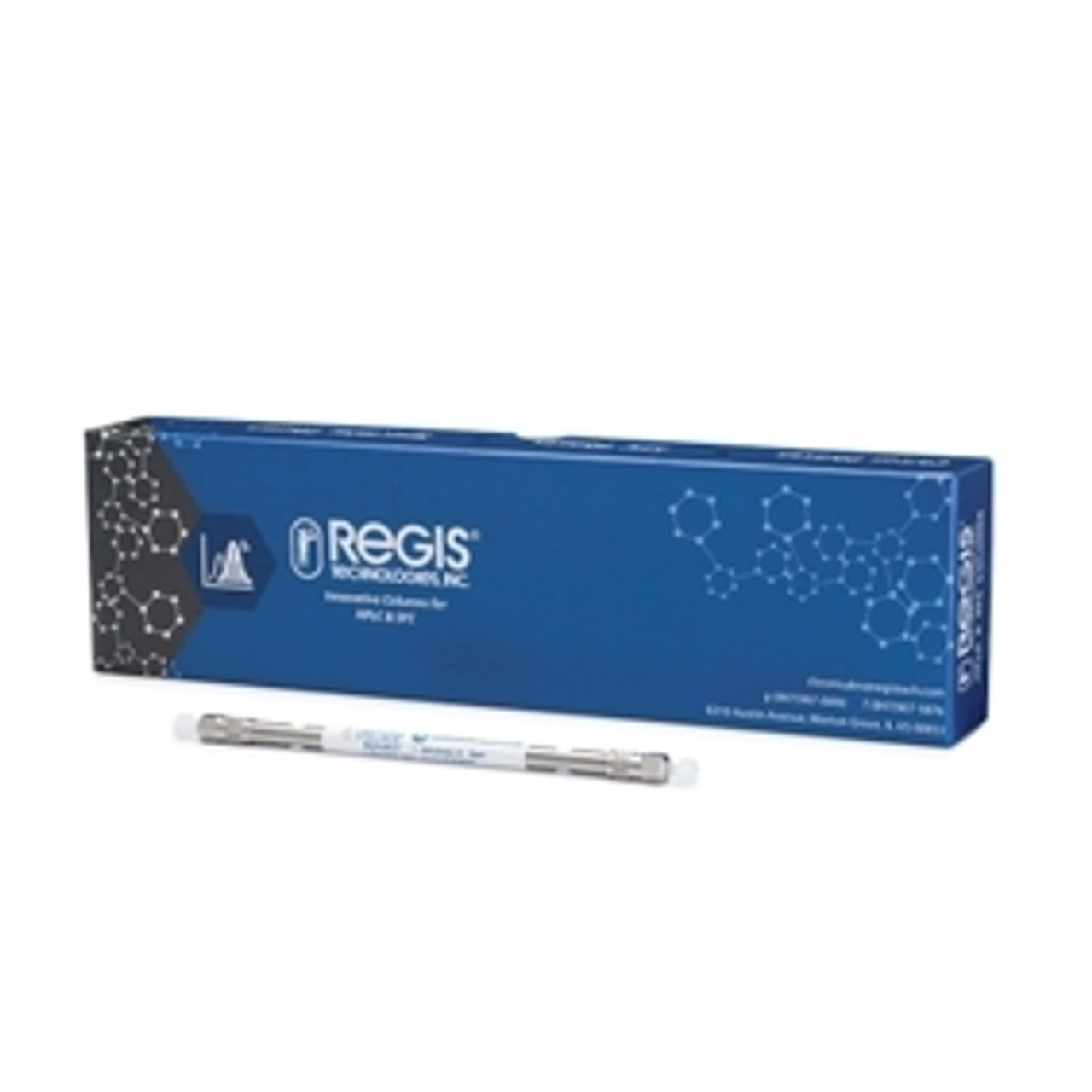Immobilized Artificial Chromatography

Regis Immobilized Artificial Chromatography Columns
Immobilized Artificial Membrane (IAM) technology is an innovative approach to chromatography in which the chromatographic surface emulates the lipid environment of the cell membrane. Phosphatidylcholine (PC) is the major phospholipid found in cell membranes. IAM chromatography phases prepared from PC analogs closely mimic the surface of a biological cell membrane. Consequently, IAM phases display a high affinity for membrane proteins and are useful in membrane protein purification and in the study of drug membrane interactions. The IAM surface is formed by covalently bonding the membrane-forming phospholipids to silica. Several different types of IAM columns are used for various applications.
Regis IAM.PC
The IAM.PC phase, developed by Dr. Charles Pidgeon of Purdue University, was the first in a line of IAM phases to be manufactured by Regis. Use of this phase has simplified the inherent difficulties of protein isolation and purification, allowing for rapid purification of membrane proteins while maintaining biological activity. The IAM.PC phase is an important tool for the pharmaceutical industry and academia alike.
Regis IAM.PC.DD2
IAM Fast-Screen Mini Column
IAM chromatography has recently gained acceptance among drug discovery chemists for estimating the membrane permeability of small molecule drugs. The figure to the right illustrates that the interaction between membrane bilayer and drug can be modeled by the IAM column/drug system.
KIAM, the equilibrium constant describing the relative concentrations of drug in the membrane and in the external fluid, is analogous to the KIAM. This IAM technique provides superior correlation with experimentally determined drug permeability when compared to other chromatographic methods. ODS silica, for example, retains analytes solely on the basis of hydrophobicity. IAM more closely mimics the interaction of analytes with biological membranes, where a combination of hydrophobic, ion pairing, and hydrogen bonding interactions are possible. This combination of interactions measured by the IAM column is known as phospholipophilicity.

